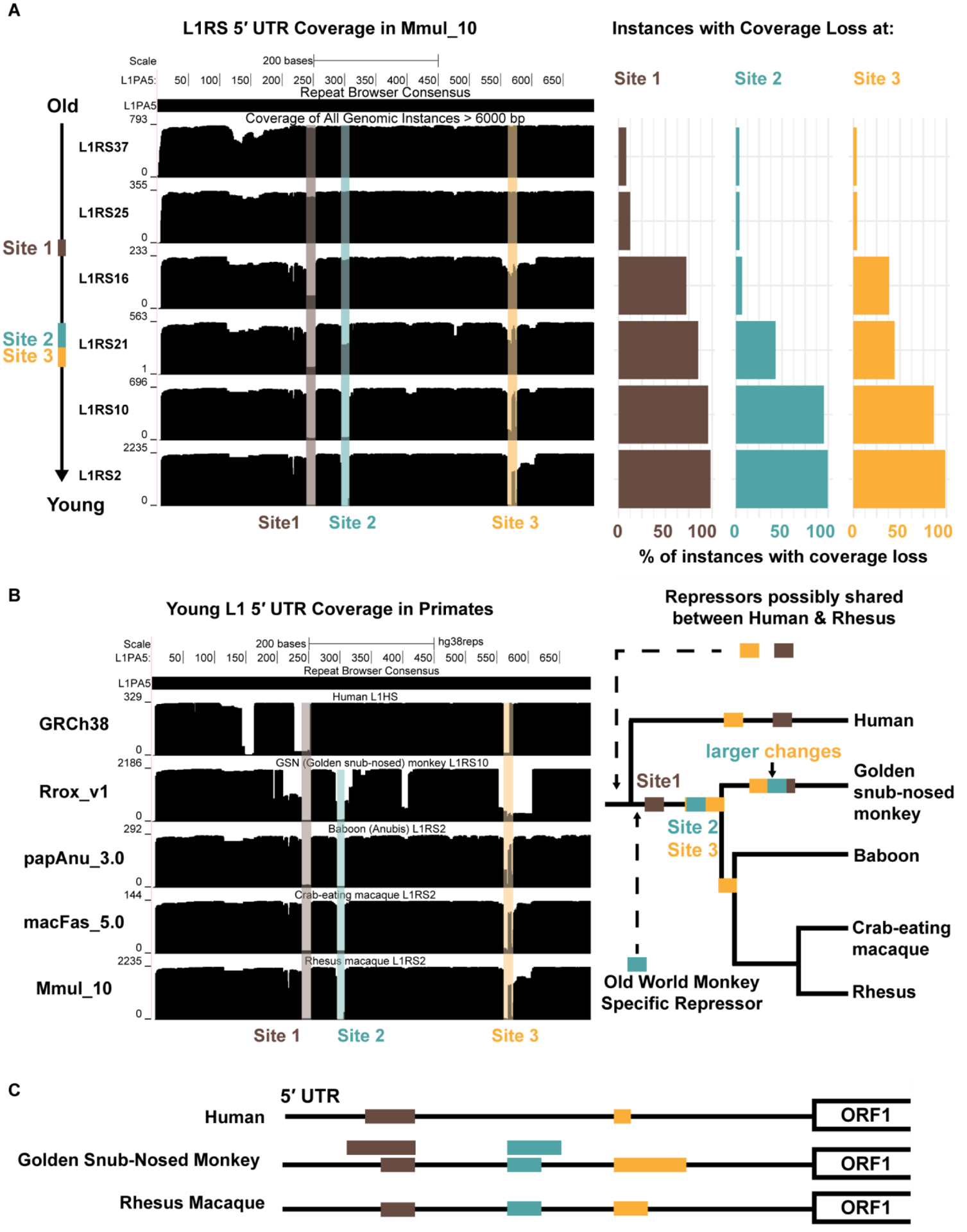Figure 5. Evolution of L1RS elements.

(A) (Left) All full-length L1RS elements (>6000 nt, top schematic) were grouped by families and mapped to a consensus version of L1PA5 (the ancestral LINE-1 element from which they derive) with the first 700 nt (red) of the 5’ UTR analyzed further. Site 1 (brown) experiences a coverage drop that is found in the majority of L1RS16 and younger families. Coverage drops at Site 2 (blue) and Site 3 (yellow) occur in the L1RS21 family at nearly the same time. (Right) Percentage of individual instances that do not map to the L1PA5 consensuses for each L1RS family. Coverage drops are not found in old L1RS elements but found in nearly all young elements, suggesting a fitness advantage for the changes at each site. (B) (Left) All full-length elements (>6000 nt) of the youngest L1RS families in four OWM genomes (L1RS10 in Rrox_v1/rhiRox1 [golden snub-nosed monkey] and L1RS2 in Panu_3.0/papAnu4 [baboon], Macaca_fascicularis_5.0/macFas5 [crab-eating macaque], and Mmul_10/rheMac10) were aligned to the L1PA5 consensus to generate coverage plots. The youngest human L1 (L1HS) was also aligned to L1PA5 as an outgroup. Drops in coverage (Site 1, Site 2 and Site 3) were seen in OWM, although golden snub-nosed monkeys (Rrox_v1/rhiRox1) display distinct patterns from other OWM suggesting convergent but distinct changes in the 5’ UTR, possibly to escape repressive elements. (Right) An evolutionary model for shared and convergent changes in L1RS elements. Site 1 changes are shared amongst all OWM while Site 2 and 3 changes experience similar but not exact changes in Rrox_v1/rhiRox1 compared to other OWM. Coverage drops at Sites 1 and 3 are also observed in human while Site 2 changes are OWM specific. (C) Schematic of Site 1, 2, and 3 (brown, blue, yellow) changes on the L1 5’ UTR in representative lineages: human, golden snub-nosed monkey, and rhesus. Rhesus macaque and golden snub-nosed monkey have identical coverage drops at Sites 1 and 2 that arose in the OWM common ancestor; golden snub-nosed monkeys also experience larger changes (larger bars) spanning these sites that most likely occurred after the Colobinae divergence as they are not observed in rhesus. Humans experience a unique coverage drop at Site 1 larger than rhesus but smaller than the large golden snub-nosed monkey-specific changes. All three species experience unique changes resulting in differing length elements at Site 3.
